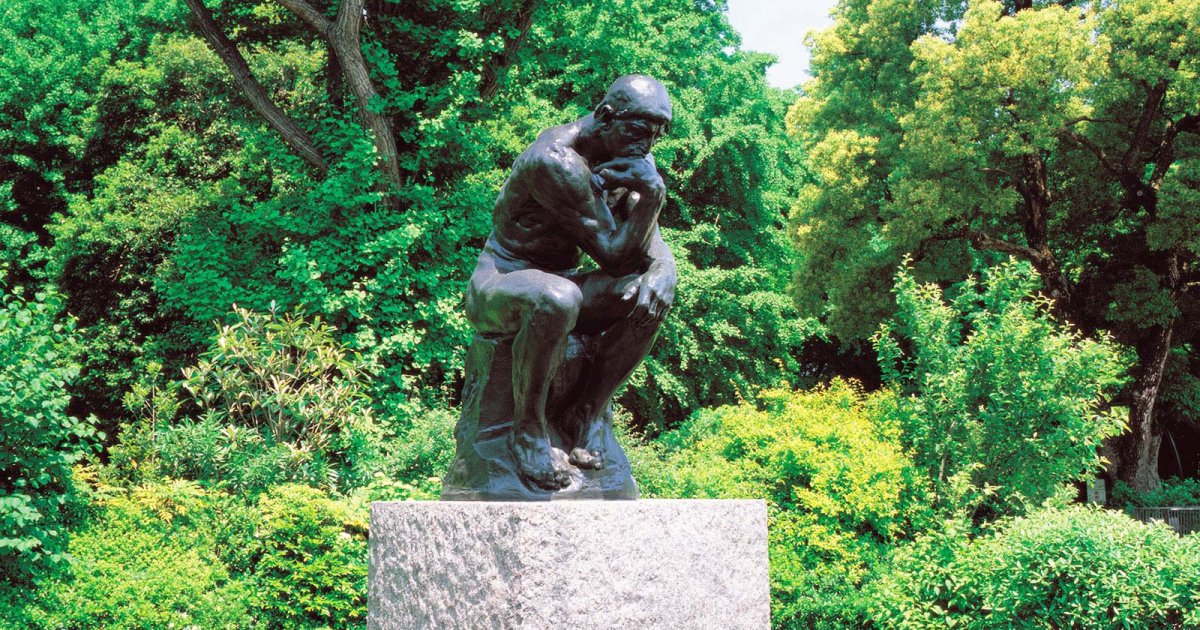MUSEUM OF WESTERN ART, Rodin Lobby
 Language: English / USA
Language: English / USA
In the lobby of the museum, you can see the 1882-83 version of The Thinker, perhaps Rodin’s best-known work and one of the most widely admired worldwide. There is more than just one copy of the sculpture; a number of bronze castings were made from the clay model. The one you can admire here dates to 1904.
The statue depicts the same image of a man deep in thought you already saw on The Gates of Hell. Although the sculpture does not actually look like Dante, Rodin’s intent was to represent the author of the Divine Comedy, and the statue was initially known as “The Poet”.
The figure, deep in thought, is nude, because Rodin’s works were inspired by classical Greek sculpture, which idealized a balance between interior and exterior beauty. The specific inspiration for this statue, however, which many see as a representation of philosophy, came from Il Pensieroso, the figure sculpted by Michelangelo on the tomb of Lorenzo de’ Medici in the Basilica of San Lorenzo in Florence.
The museum is home to a total of fourteen statues by Rodin. You might also like to take a look at the one of Saint John the Baptist. The model for the statue was an Italian peasant who visited the artist’s workshop: at first sight, his striking bearing and physique and the mystical expression on his face prompted Rodin to think of the Saint.
What is unusual about this statue, which shows the naturally muscular frame of a man accustomed to toil in the fields, is the position of the legs: spread open as if the figure were walking, yet straight and with both feet on the ground, in an unnatural pose for a man in movement. Rodin explained that his intention was not to show the man walking, but the impulse to do so.
Another fine work by Rodin exhibited here is the sculpture entitled "Fugit amor”, Latin for “fugitive love”. Though it is charged with eroticism and sensuality, the statue from 1887 portrays the two lovers in entirely unnatural positions, with the woman lying down and the man slipping off her back, and its aim is to show the fleeting nature and rapid end of carnal love. You may recall that this figure also appears among those on The Gates of Hell. You can compare it with a similarly erotic statue entitled “I am beautiful”, showing a nude man raising a woman in his arms, representing the bond between the two sexes.
An interesting fact: Rodin was so enamored of The Thinker that he wanted a copy placed on his tomb.



